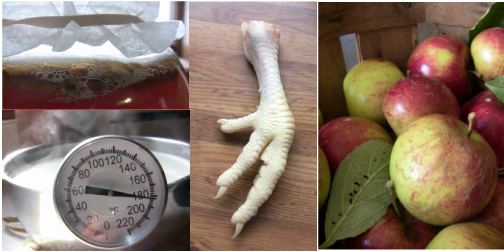Some of us have at our disposal chicken wings, necks, and yes- feet. These less-meaty parts are absolutely wonderful for making gelatinous bone broth with. What I love about chicken feet is that everyone thinks they are gross and nobody wants them. That translates into more available chicken feet for opportunists like me.
The feet are an AMAZING source of gelatin, so please don't throw them out when you butcher! With some cleaning and preparation, these worthless appendages can be turned into nutritional gold.
1. Wash the feet. During the butchering process, my chicken feet got pretty clean, plus they were pastured chickens and pretty clean to start with. But if your chicken feet have clumps of poop on them, PLEASE... by all means wash it off.
2. Dip the feet in boiling water for 10-20 seconds, then plunge into ice water. Basically like blanching green beans.
3. Peel the top layer of scales off. In addition to sterilizing the feet, you've now peeled off the top layer and greatly reduced the "gross factor". The feet should look very clean. This step takes a while, but you can do it while watching an educational Youtube video or listening to a podcast be better utilize your time.
4. Cut off the toenails (talons, claws) with a knife. This might require some heavy-duty chopping action. But you can do it.
And that's all there is to preparing chicken feet. There are some great tutorials and comparison photos here and here.
Throw the feet in the freezer, or use them right away for making stock in the pressure canner.

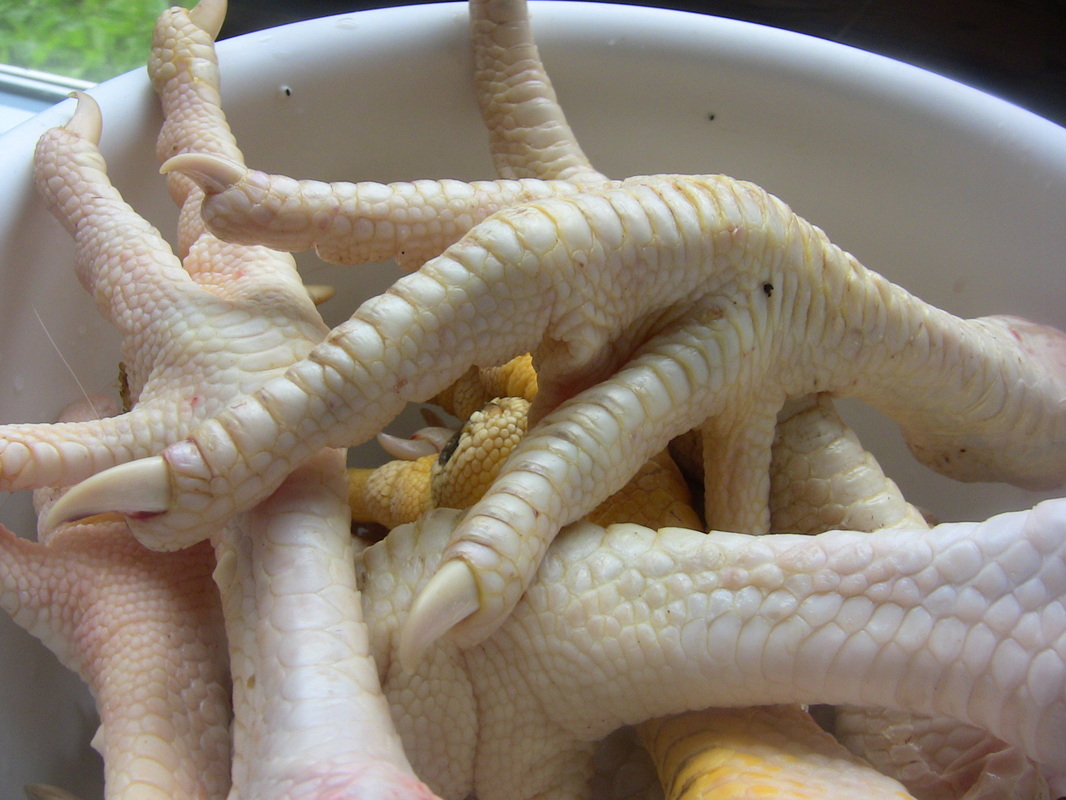
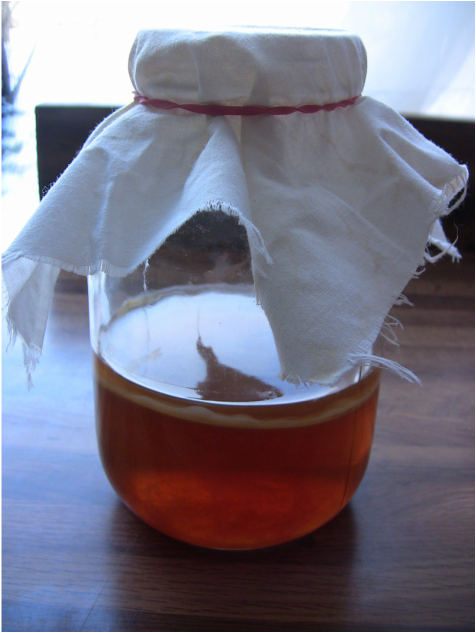




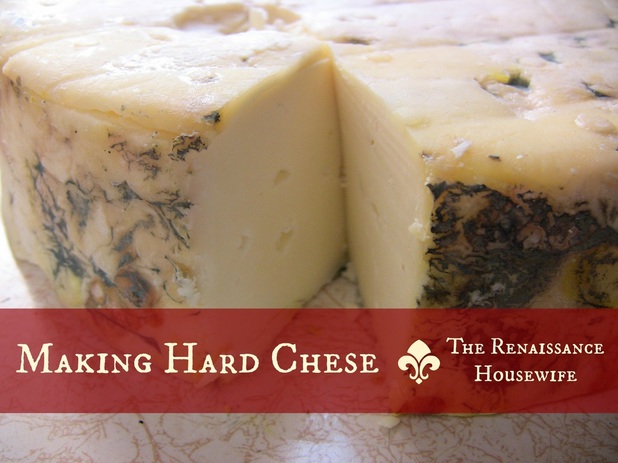
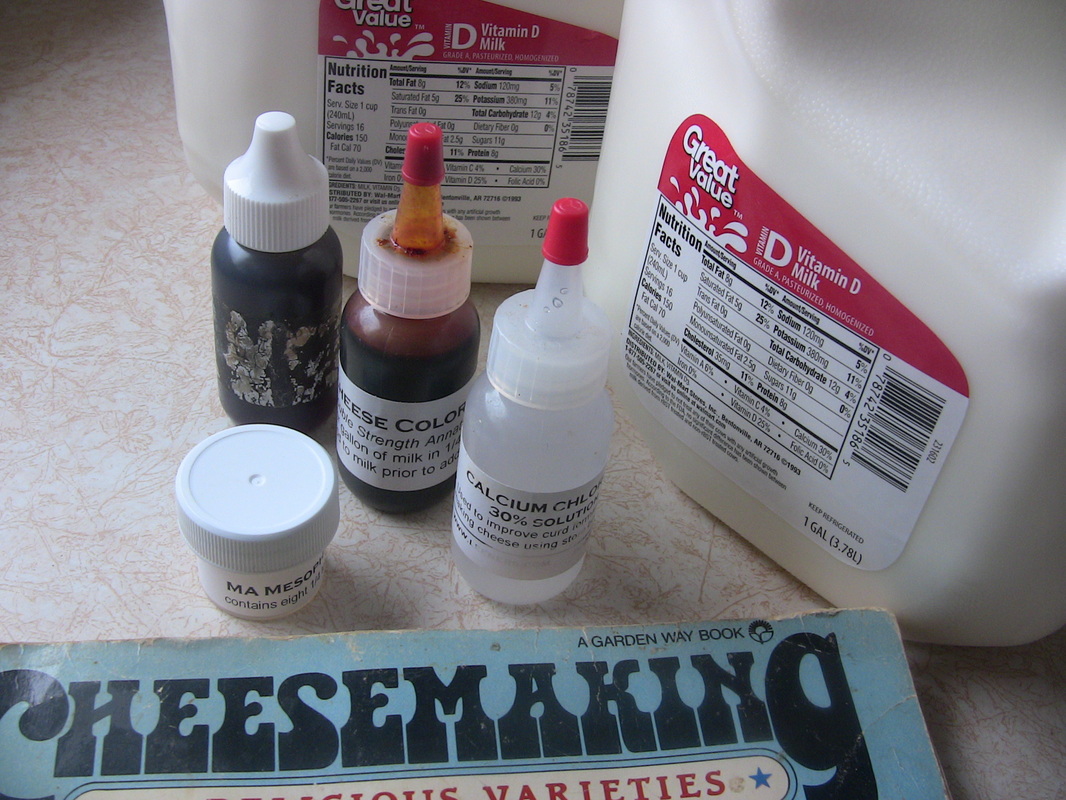
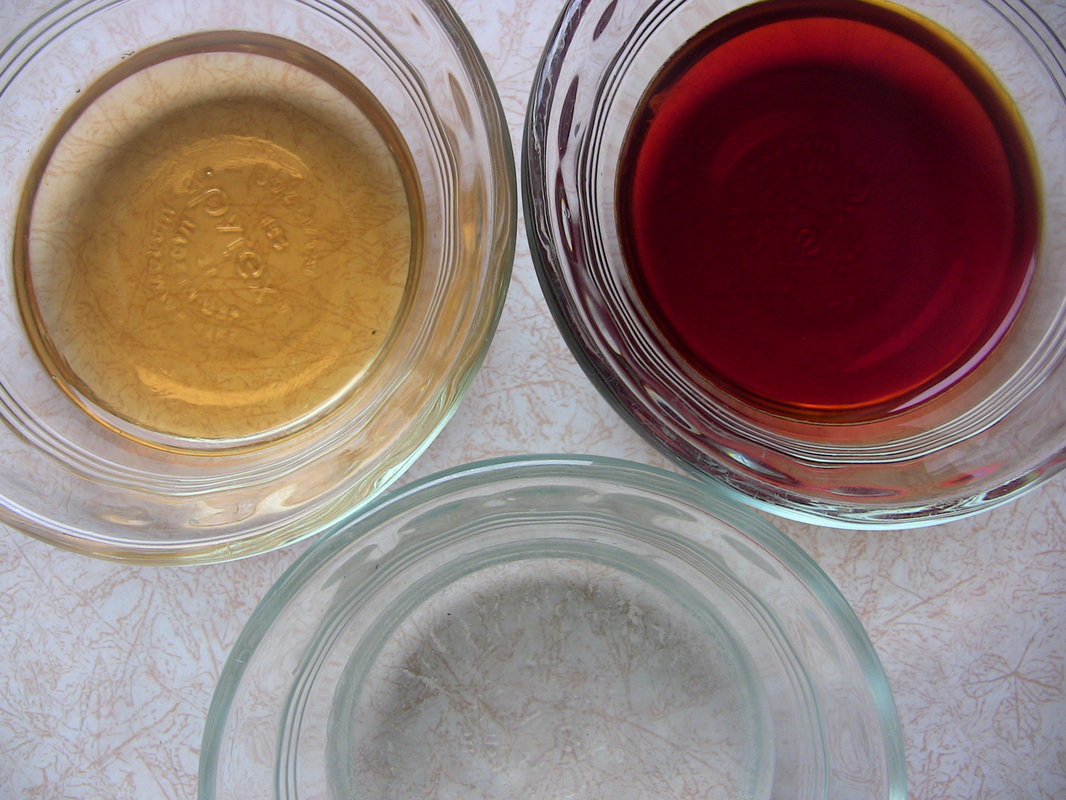
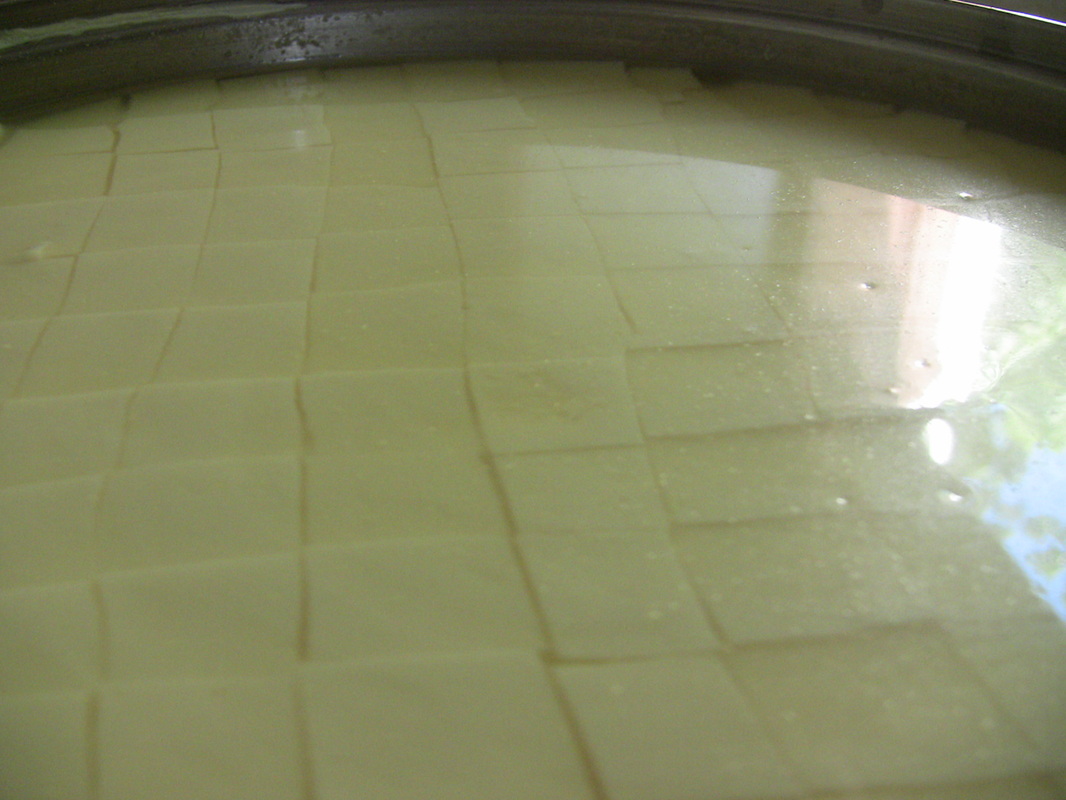
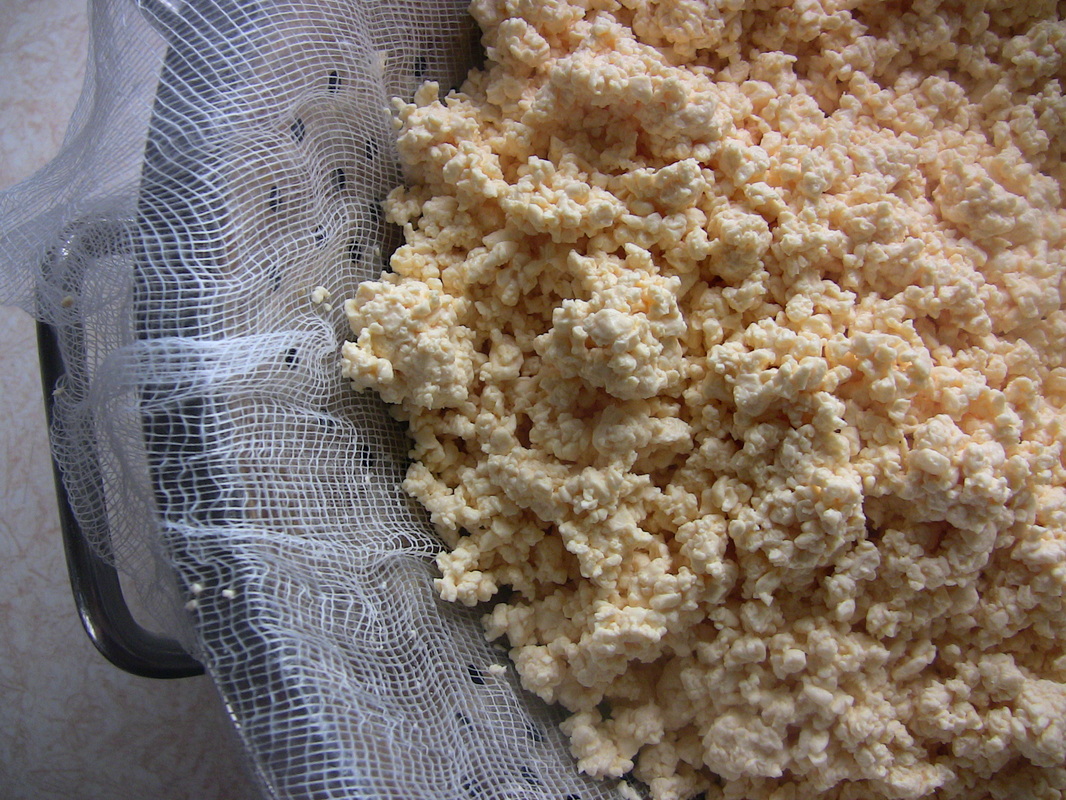
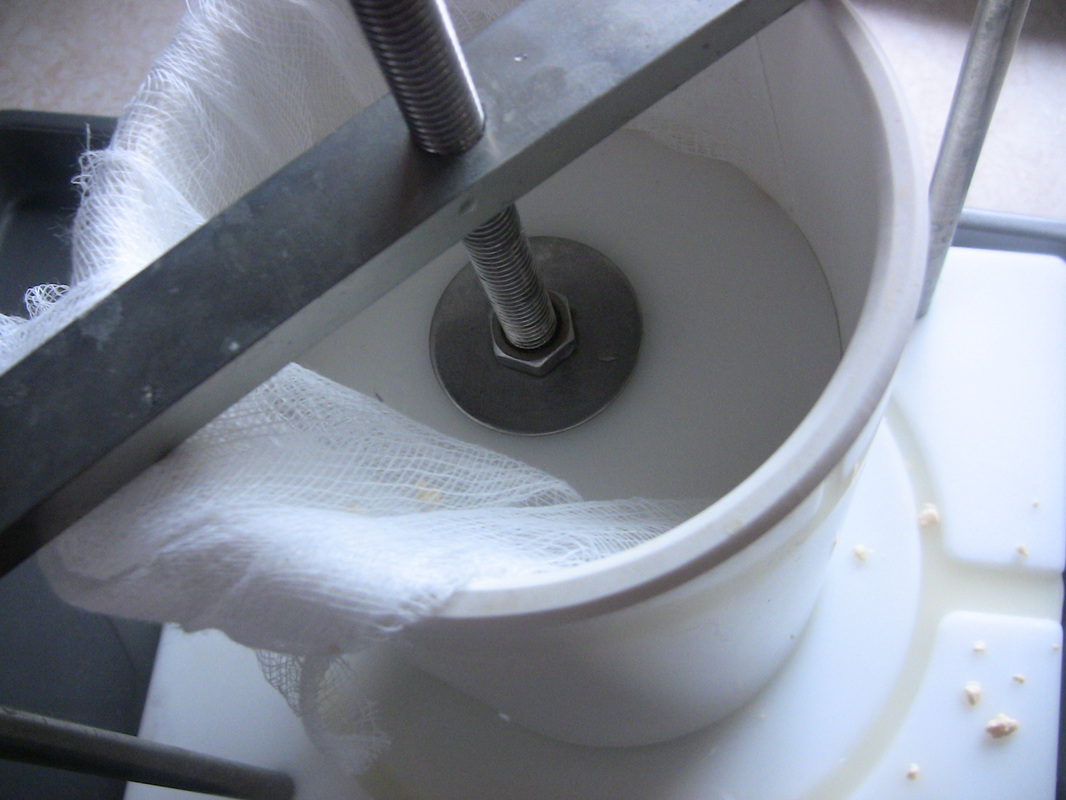
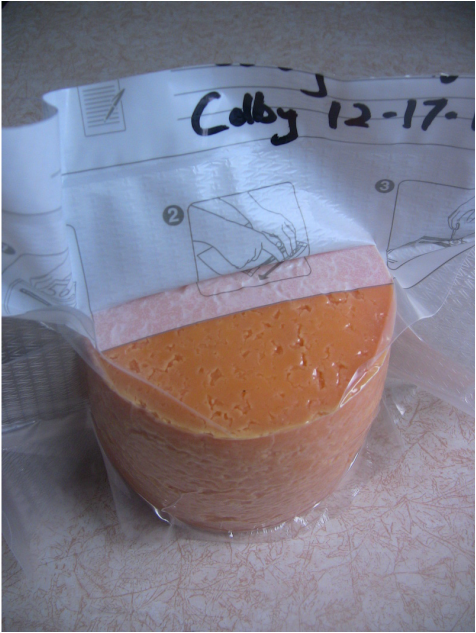
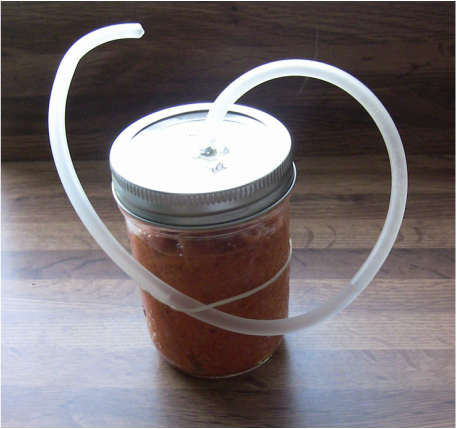


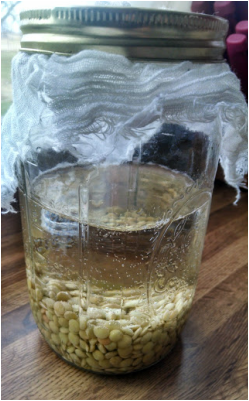
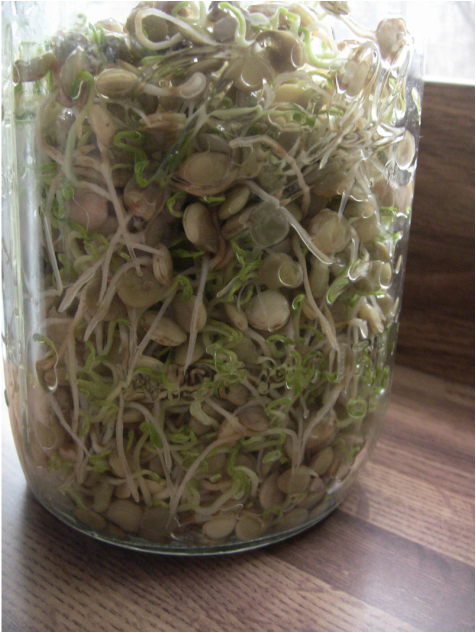





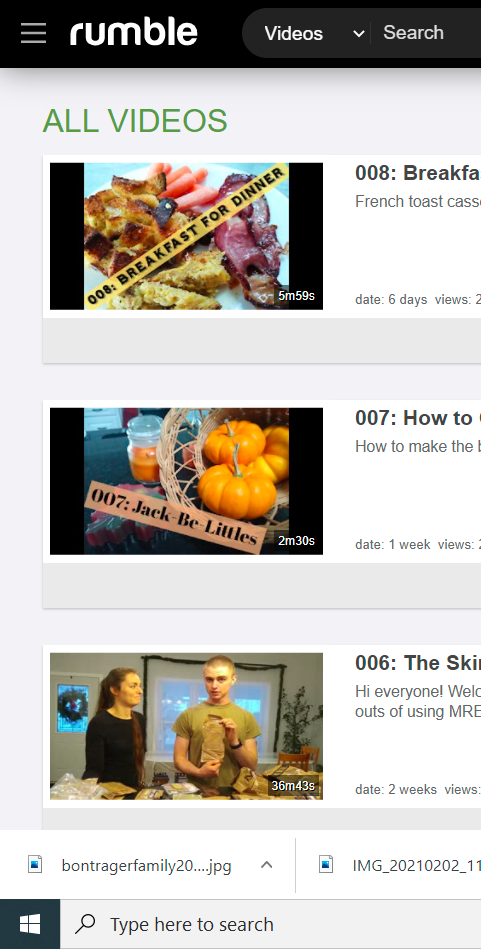
 RSS Feed
RSS Feed

